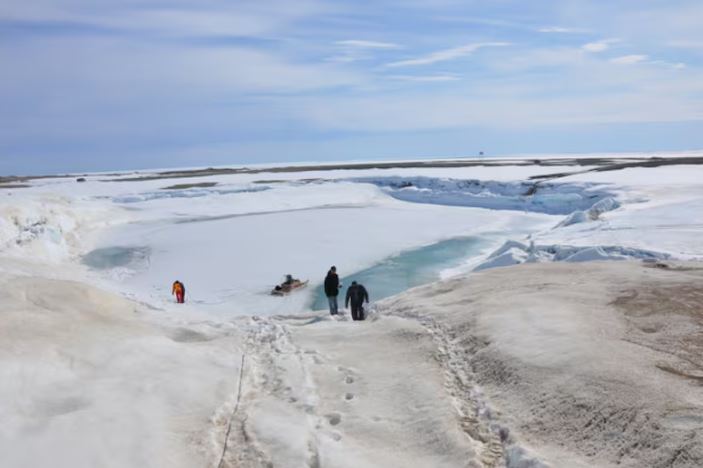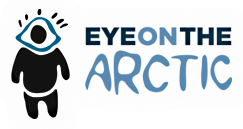As permafrost thaws, a generations-old Inuit delicacy faces new risks

By Carl Cardinal
Hunters in Igloolik, Nunavut, used to know exactly where to dig. Just beneath the gravel surface, into the cold, solid layer of permafrost ideal for preparing one of the most cherished Inuit delicacies: Igunaq, a dish made from fermented walrus.
But now, thawing permafrost and unstable ground are bringing the practice into question leading to changes in the tradition, and in some cases, health concerns.
To make Igunaq, hunters cut into the walrus, sew the meat and fat back into the animal’s skin and bury it into, or on, permafrost. It’s left for months to ferment before being dug back up to eat. Often the meat is buried on a granite stone to allow air circulation but no light.
But increasingly, hunters say the ground beneath them no longer behaves the way it used to.
‘We’re digging deeper now’
David Irngaut, a respected hunter from Igloolik, describes a major shift.
Nowadays Inuit are digging deeper because the permafrost is no longer easy to reach, he said.
As the ice within the soil melts, ground stability decreases. That affects everything from infrastructure in the North to travel routes, and food storage practices.
A 2022 Canadian Climate Institute report explains how permafrost thaw has accelerated across the North.
It warns that thawing creates unstable ground layers, sometimes triggering slumping and landslides, which expose deeper layers to warmer air, speeding up thaw and making walrus meat more difficult to ferment.
This cold storage system, which is not reliant on external power supplies, is becoming increasingly difficult to maintain as warm summer temperatures lead to permafrost thaw and decrease the internal temperature and depth of these chambers, potentially risking spoiled food and lost harvests. As a result, disease contracted through harvested foods may become more common, the report states.
Historically, Igloolik’s gravel, limestone, and slate terrain created ideal fermentation conditions. But now, the depth of frozen ground has changed.
Loek Pascaud, a master’s student at the University of Sherbrooke, studies these shifts.
Permafrost is warming at a global scale … if it is less cold than it used to be, and also deeper, that might change what they try to achieve, he said.
Fermentation risks rising
Igunaq is traditionally safe to eat when fermented in stable, cold, oxygen-limited conditions. But warmer temperatures introduce new food safety challenges.
Public health agencies have reported that fluctuating temperatures during marine mammal fermentation can lead to botulism — a bacteria-based disease that can cause muscle paralysis and difficulty breathing — including cases linked to Igunaq in the Arctic.
The Nunavik Regional Board of Health and Social Services recommend waiting until fall to begin the traditional outdoor aging process when temperatures are cooler.
Walrus is not the only food facing environmental pressure.
In Kimmirut, hunter Sandy Akavak says warming conditions are altering traditional seal fermentation too.
Inuit used to ferment whole seals in the shade — not buried, Akavak said.
But this method requires consistently cold air temperatures and that’s no longer a given.
Both Akavak and Irngaut worry that as the climate continues to warm they may loose the practice altogether and have to find news ways of fermenting their meat.
Related stories from around the North:
Canada: Study warns thawing permafrost could release substantial mercury in Yukon River, CBC News
Norway: Thawing permafrost melts ground under homes and around Global Seed Vault in Svalbard, The Independent Barents Observer
Finland: Experts urge policy overhaul to address climate tipping point risks, Eye on the Arctic
Russia: Melting permafrost may release industrial pollutants at Arctic sites: study, Eye on the Arctic
United States: 30–50% of critical northern infrastructure could be at high risk by 2050 due to warming, says study, Eye on the Arctic



